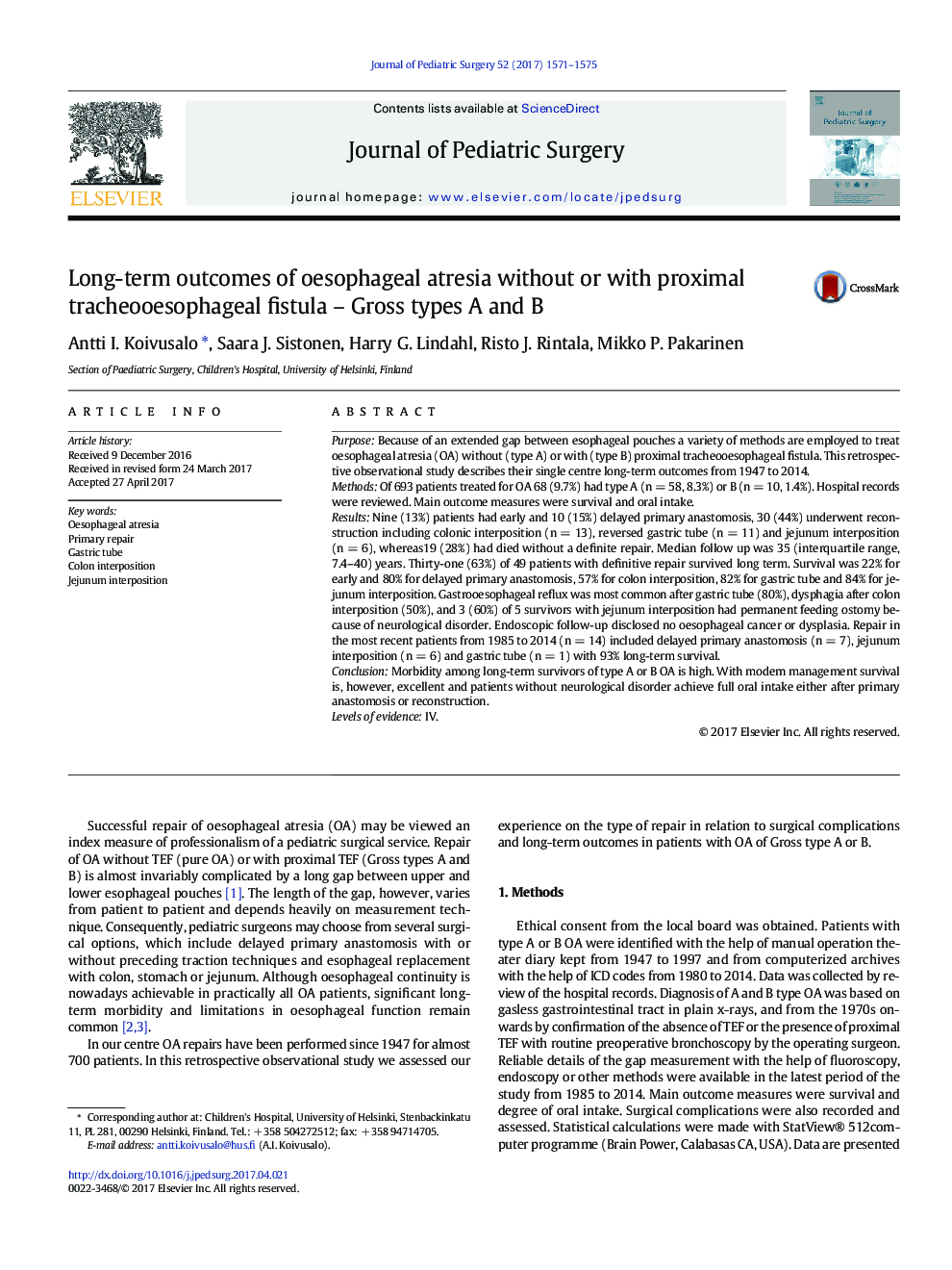| کد مقاله | کد نشریه | سال انتشار | مقاله انگلیسی | نسخه تمام متن |
|---|---|---|---|---|
| 5718060 | 1607092 | 2017 | 5 صفحه PDF | دانلود رایگان |

PurposeBecause of an extended gap between esophageal pouches a variety of methods are employed to treat oesophageal atresia (OA) without (type A) or with (type B) proximal tracheooesophageal fistula. This retrospective observational study describes their single centre long-term outcomes from 1947 to 2014.MethodsOf 693 patients treated for OA 68 (9.7%) had type A (n = 58, 8.3%) or B (n = 10, 1.4%). Hospital records were reviewed. Main outcome measures were survival and oral intake.ResultsNine (13%) patients had early and 10 (15%) delayed primary anastomosis, 30 (44%) underwent reconstruction including colonic interposition (n = 13), reversed gastric tube (n = 11) and jejunum interposition (n = 6), whereas19 (28%) had died without a definite repair. Median follow up was 35 (interquartile range, 7.4-40) years. Thirty-one (63%) of 49 patients with definitive repair survived long term. Survival was 22% for early and 80% for delayed primary anastomosis, 57% for colon interposition, 82% for gastric tube and 84% for jejunum interposition. Gastrooesophageal reflux was most common after gastric tube (80%), dysphagia after colon interposition (50%), and 3 (60%) of 5 survivors with jejunum interposition had permanent feeding ostomy because of neurological disorder. Endoscopic follow-up disclosed no oesophageal cancer or dysplasia. Repair in the most recent patients from 1985 to 2014 (n = 14) included delayed primary anastomosis (n = 7), jejunum interposition (n = 6) and gastric tube (n = 1) with 93% long-term survival.ConclusionMorbidity among long-term survivors of type A or B OA is high. With modern management survival is, however, excellent and patients without neurological disorder achieve full oral intake either after primary anastomosis or reconstruction.Levels of evidenceIV.
Journal: Journal of Pediatric Surgery - Volume 52, Issue 10, October 2017, Pages 1571-1575